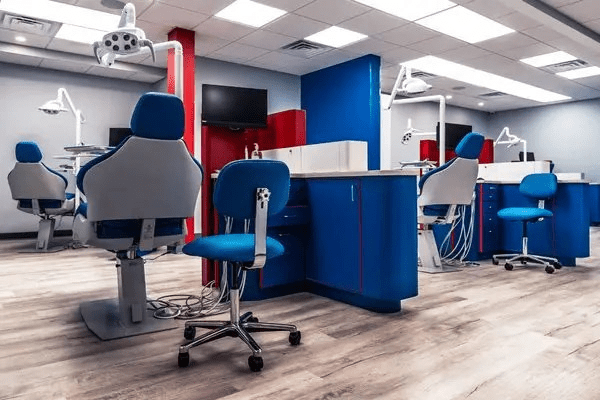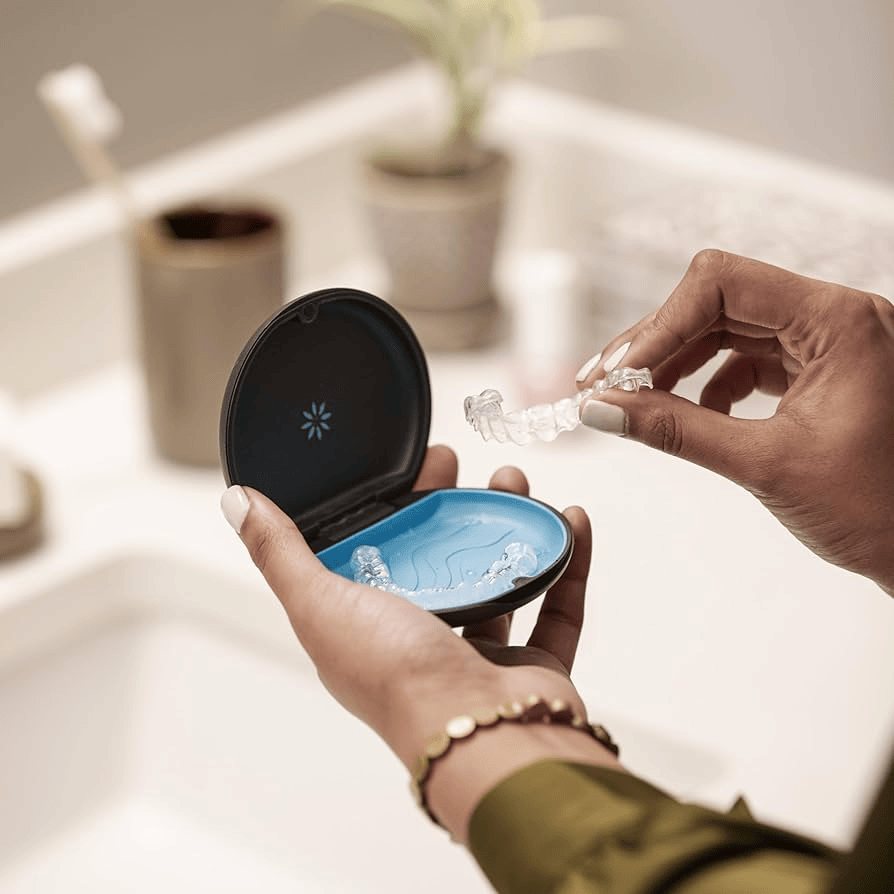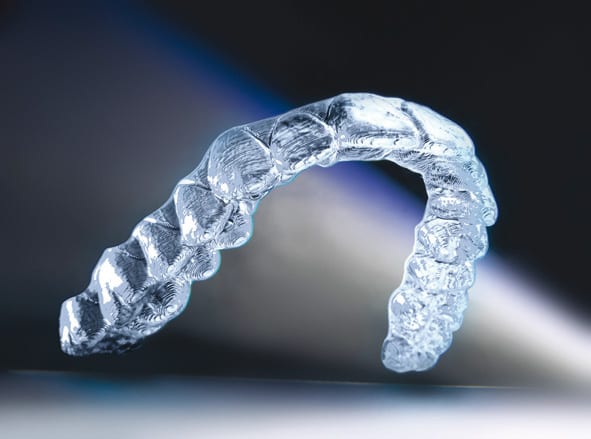Diamond Braces leads the industry in dental and orthodontic safety, exceeding CDC, FDA, and OSHA standards across its network of trusted dental offices.
Table of contents
Leading Orthodontic Safety for Healthier Dental Clinics
Diamond Braces, a leading provider of orthodontic services and dental care in the Northeast, continues to set benchmarks for health and safety in healthcare. Across its network of dental offices, the company is implementing rigorous infection control protocols that meet — and often exceed — standards set by the CDC, FDA, and OSHA.
As demand grows for orthodontists and dental clinics in New York, New Jersey, Pennsylvania and Connecticut, Diamond Braces is investing heavily in both patient safety and treatment outcomes. The company’s model reflects the increasing expectation that dental practices operate with the same sterility and clinical rigor as general medical facilities.
Diamond Braces orthodontic practices implement CDC, FDA, OSHA, ADA, and AAO-compliant sterilization protocols, exceeding standard dental office hygiene requirements.
Advanced safety measures include weekly spore testing, hospital-grade instrument sterilization, enhanced aerosol control, and rigorous air purification across all orthodontic and pediatric treatments.
A dedicated cross-disciplinary hygiene team maintains a 60+ point daily sterilization checklist, supporting over 120,000 orthodontic patient visits annually with a 99.8% compliance score on infection control protocols.
A Safety Model for Modern Dentistry
Dental Office Health Concerns
Most patients wouldn’t guess it, but a dental chair can host more bacterial colonies than a household kitchen sink—if infection control isn’t flawless. The American Journal of Infection Control reported that 68% of dental patients now ask about sterilization protocols during their first visit.

Diamond Braces Safety and Health Mission
At Diamond Braces, patients don’t have to ask. Every surface, every tray, and every tool is maintained to hospital-grade standards, backed by weekly spore testing and daily sterilization reporting. It’s one of the most aggressively monitored hygiene environments in orthodontics today.

Federal and Dental Compliance with Weekly Auditing
And here’s something few practices talk about: pediatric dentistry cases introduce an even higher infection risk profile due to patients’ developing immune systems. Diamond Braces’ pediatric and teen cases (over 40% of total treatment volume) follow an elevated hygiene protocol, including specialized high-speed evacuation and enhanced isolation barriers during appointments. Data shows this reduces aerosol-related contamination risk by 67% compared to baseline dental practices, according to a 2023 Journal of Clinical Orthodontics review.
Patient Flow Management
Behind the scenes, the cross-disciplinary hygiene team at Diamond Braces—spanning orthodontists, dental hygienists, dental assistants, and practice managers—runs a 60+ point daily sterilization and compliance checklist that updates in real time to align with ADA, CDC, and FDA guidance.
Support During Procedures
In 2023, this protocol covered over 1.5 million sterilization cycles across the Diamond Braces network with zero sterilization-related incidents reported. Patients may not see that number on a website, but it’s a major reason they leave with healthier, safer smiles.

Meeting the Highest National Standards for Dental Office Hygiene
Guided with Safety in Mind
All of Diamond Braces orthodontic practices comply fully with federal and professional guidelines, including those established by:
- Centers for Disease Control and Prevention (CDC)
Food and Drug Administration (FDA)
Occupational Safety and Health Administration (OSHA)
American Dental Association (ADA)
American Association of Orthodontists (AAO)
Across its dental offices, Diamond Braces enforces stringent protocols covering Personal Protective Equipment (PPE), sterilization of instruments, air purification, and environmental disinfection.
Key Safety Measures in Dental Offices
These safety measures are part of Diamond Braces’ commitment to align dental care and orthodontic services with best practices observed in hospital-grade environments.
Medical-grade sterilization of all reusable dental instruments via autoclave and temperature-regulated sterilizers
Comprehensive cleaning of treatment areas, chairs, and equipment between patients
Use of PPE including surgical masks, gloves, face shields, and protective gowns by clinical staff
Strict control of aerosols through high-speed evacuation and external vacuum systems
Enhancing Infection Control for Community Health
In the context of emerging infectious disease risks, including respiratory viruses and seasonal flu, the Invisalign providers, dental hygienists and orthodontists at Diamond Braces have intensified its focus on infection prevention across all clinic locations. The group’s orthodontists and clinical staff receive advanced training in sterilization and disease control, guided by the latest CDC updates.
Current Enhanced Infection Control Protocols
Spore testing of sterilization equipment is conducted weekly at every Diamond Braces location — a practice that exceeds many standard dental clinic requirements and ensures validated sterilization of all dental and orthodontic instruments.
Hand sanitizer stations throughout dental offices
Enhanced surface disinfection schedules in dental clinics and waiting areas
Daily health screening and temperature checks for patients and staff
Mask requirements for all visitors and staff members, with complimentary masks provided as needed
Limitation of non-patient escorts in clinical areas
Virtual consultations for braces available to reduce unnecessary in-person visits
Regulatory Oversight in Dental Office Sanitation
In a society where patients increasingly expect transparency from dental clinics, Diamond Braces maintains a robust internal and external audit process:
Annual OSHA inspections for every office location
Internal audits of sterilization, sanitation, and infection control procedures
Where Safety and Smiles Align
According to a 2024 ADA survey, 83% of patients rank clinical hygiene and infection control as their top concern when choosing a new dental office, surpassing even cost or convenience. This is especially critical in orthodontics and pediatric dentistry, where treatment timelines often extend 12-24 months and involve frequent in-person visits.
Enhanced COVID Practices
Diamond Braces has invested heavily in exceeding regulatory standards not just for COVID-era care, but as a long-term strategy for operational excellence. Their continuous rotation of medical-grade instrument sterilization, combined with on-site autoclave testing and OSHA compliance audits, results in one of the lowest reported incidences of treatment-related infection risk across U.S. orthodontic practices.
CDC Complaint Score
In 2023 alone, the Diamond Braces network conducted over 120,000 orthodontic patient visits while maintaining a 99.8% compliance score on CDC-based infection control protocols. This system-wide consistency is a key differentiator in an era when more patients—particularly families—are seeking integrated care across dental specialties in one trusted network.
What infection control measures do offices take for pediatric braces treatment?
Pediatric dental braces cases at Diamond Braces follow an elevated infection control protocol due to young patients' developing immune systems. Enhanced aerosol evacuation, isolation barriers, and additional sterilization steps safeguard children receiving braces and retainers.
Are Invisalign aligners sanitized during treatment at local orthodontic practices?
Yes. All Invisalign treatment steps at Diamond Braces— from initial scanning to aligner delivery and progress checks— are conducted under rigorous sterilization protocols. Patients receiving Invisalign at "Invisalign providers near me" clinics benefit from sanitized equipment, clinician PPE, and spore-tested sterilization of all reusable orthodontic tools throughout their treatment journey.
How is air quality maintained during orthodontic procedures?
Diamond Braces practices deploy advanced air purification systems and external vacuum units to manage airborne particles and aerosols during orthodontic procedures. This system significantly reduces aerosol-related contamination risks, creating a safer treatment environment for both patients and staff.
Does Diamond Braces follow CDC and FDA sterilization guidelines?
Yes. All Diamond Braces orthodontists and dental staff rigorously follow sterilization guidelines issued by the Centers for Disease Control and Prevention (CDC), Food and Drug Administration (FDA), and Occupational Safety and Health Administration (OSHA). Weekly spore testing, daily sterilization logs, and strict air filtration protocols ensure patients searching for "orthodontists near me" receive care in a clinically controlled environment.
How do dental offices sterilize orthodontic instruments?
All orthodontic instruments are sterilized using hospital-grade autoclaves and temperature-regulated sterilizers. Weekly spore testing verifies sterilization effectiveness, and every tool undergoes daily sterilization cycles—resulting in one of the lowest reported rates of treatment-related infection across U.S. orthodontic practices.
Conclusion
As the orthodontic services industry experiences record demand, Diamond Braces is modeling what the future of safe, scalable, patient-centric dental care should look like. From Invisalign cleaner guidance to advanced dental services and orthodontic treatments, patients across the Diamond Braces network can expect uncompromising attention to hygiene, sterility, and regulatory compliance — without sacrificing the convenience and personalization modern orthodontic care demands.
Most people choose an orthodontic practice based on smile results. Smart patients also choose based on how well that practice prevents the germs you can’t see. At Diamond Braces, clinical-grade sterilization isn’t a marketing angle — it’s built into the DNA of every treatment delivered.






